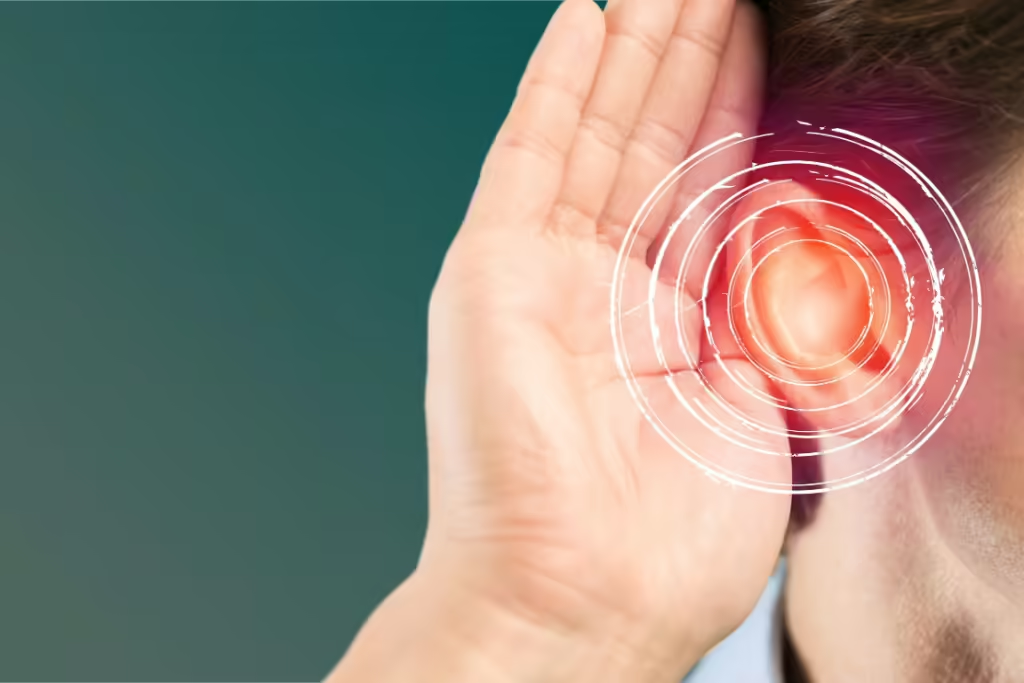“I can hear fine.” Picture this: you have good enough hearing, except maybe you can’t hear friends at noisy restaurants, or maybe you have to ask people to repeat themselves more times than you care to admit. Then, you take a hearing test only to find out you actually do have some degree of hearing loss. Sound familiar? It should. A study analyzed by the Centers for Disease Control (CDC), found that 1 in 4 of the adults who reported no hearing problems actually had measurable hearing loss1. So if you’ve ever thought to yourself, “I can hear fine”, only to find out you have some degree of hearing loss, take heart: you’re not alone.
Today, let’s explore why hearing damage is so prevalent and what you can do if you suspect you may have hearing loss. So without further ado, let’s dive in.
Why is Hearing Damage So Common?
The most common form of hearing loss is noise-induced hearing loss, affecting almost 40 million Americans ages 20 to 69.2 A form of permanent hearing damage, NIHL occurs when excessively loud noise (70 dB) damages the hair cells in your inner ear and the hearing nerve. And unfortunately, unlike other parts of our body, these sensitive, noise-sensing hair cells do not regenerate.
But why is NIHL so widespread? Simply put, noise exposure can come from many places and situations in your daily life. Examples include attending live concerts or other crowded events, using power tools, watching fireworks, and even streaming audio through your earbuds.
According to the most recent studies, 22 million American adults are exposed to hazardous noise levels at work.3 And prolonged exposure to hazardous noise levels can and will cause hearing loss. On top of that, approximately 1 in 5 American teens experience some degree of hearing loss of which the most prevalent cause is use of electronics at unsafe volumes.3
So it really shouldn’t come as a surprise that hearing damage is so prevalent.
And Why is Hearing Damage Difficult to Detect?
Did you know that of the 48 million American adults with hearing trouble, only about 20% of those individuals who might benefit from treatment actually seek help?4
Hearing loss is often categorized as an invisible health condition. Because we can’t see symptoms the way we can other conditions, it’s easy to overlook symptoms until it’s too late. In fact, most individuals with hearing loss wait an average of 10 years to address their impairment.5 And unfortunately, when it comes to hearing loss, once you lose it, it’s gone forever.
Hearing loss can also be incredibly difficult to identify because it often occurs gradually over time. So, it’s commonplace for people who have it to either ignore or find ways to cope and grow accustomed to reduced hearing. However, coping with reduced hearing is a double-edged sword. The longer you let hearing loss go, the more difficult it is to treat.6 And by leaving your hearing loss untreated, you also increase your odds of depression, falling, hospitalizations, and dementia.
So What Can You Do?
Be proactive, not reactive! When it comes to your hearing, it’s better to act the moment you suspect that you or someone you love has hearing loss. That way, you can preserve what hearing you have left before it’s too late. So above all else:
Talk to Your Doctor About Your Symptoms
Whether you think you may have hearing loss or are unsure, tell your physician. They can refer you to a licensed hearing care professional in the same way they might send you to a dermatologist for skin issues. A hearing specialist will have the equipment and expertise to evaluate your hearing and counsel you through treatment options for any hearing issues.
Use Hearing Protection Whenever Possible
Hearing Protection Devices (HPDs) are worn to safeguard your hearing and lower the risk of noise-induced hearing loss in noisy environments. They work by reducing the intensity of sound waves that reach your inner ear, protecting you from potential hearing damage. All HPDs are assigned a noise-reduction rating (NRR), which measures how effective they are at reducing noise.7
And of Course, Visit a Hearing Care Professional Yourself
Don’t underestimate hearing damage any longer. Take control of your hearing health today. And you can start with a FREE hearing screening at Rogers Hearing Solutions.We know how critical your hearing is to your everyday life. And our staff are more than happy to accommodate you as you explore this new path to better hearing.
Ready to take your hearing health seriously? Schedule an appointment today.
Not sure whether you have hearing loss? We have a test for that! Try our FREE online hearing test.
References:
- Carroll, Y. I., Eichwald, J., Scinicariello, F., Hoffman, H. J., Deitchman, S., Radke, M. S., Themann, C. L., & Breysse, P. (2017). Vital Signs: Noise-Induced Hearing loss among Adults — United States 2011–2012. MMWR Morbidity and Mortality Weekly Report, 66(5), 139–144. https://doi.org/10.15585/mmwr.mm6605e3
- Noise-Induced hearing loss. (2022, March 16). NIDCD. https://www.nidcd.nih.gov/health/noise-induced-hearing-loss
- Hearing Loss Association of America. Hearing Loss Facts and Statistics. Found on the internet at https://www.hearingloss.org/wp-content/uploads/HLAA_HearingLoss_Facts_Statistics.pdf
- Oyler, Anne L., AuD, CCC-A (2012): Untreated Hearing Loss in Adults. American Speech-Language-Hearing Association. https://www.asha.org/articles/untreated-hearing-loss-in-adults/
- Reed, Nicholas J, et al. Trends in Healthcare Costs and Utilization Associated With Untreated Hearing Loss Over 10 Years. JAMA Otolaryngology Head Neck Surgery. January 2019. Found on the internet at https://www.ncbi.nlm.nih.gov/pmc/articles/PMC6439810/
- American Speech-Language-Hearing Association. Untreated Hearing Loss in Adults. January 2012. Found on the internet at https://www.asha.org/articles/untreated-hearing-loss-in-adults/
- Collins, Kent, MD. What is Double Hearing Protection and When is It Required? August 2024. Found on the internet at https://www.audibel.com/preventative-care/double-hearing-protection-overview/

